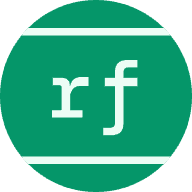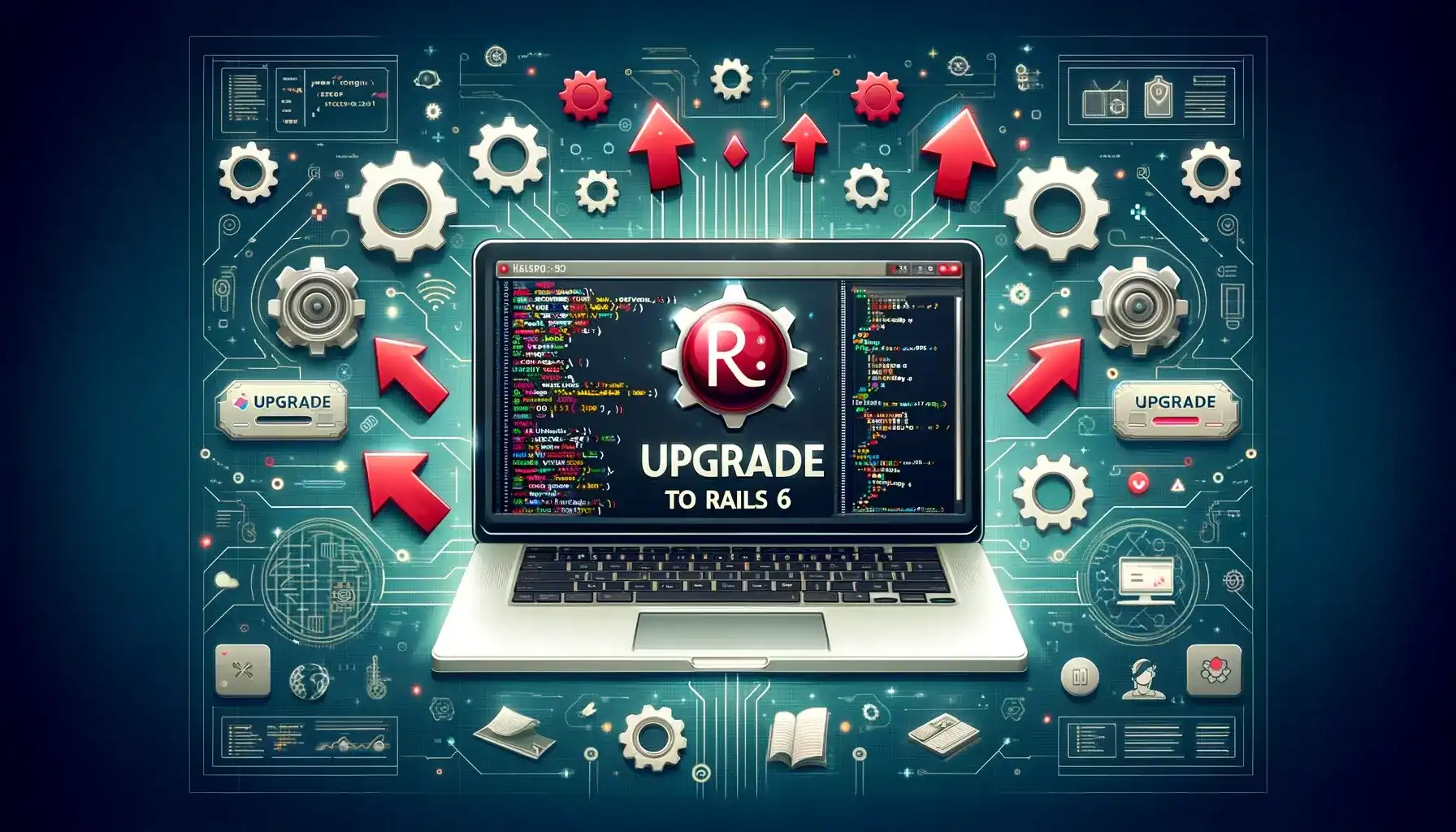Ruby on Rails Web Framework - History, Benefits and Uses
Looking for a future-proof framework? Learn what Ruby on Rails is, how it evolved, and why it’s trusted for high-performance apps across industries.

Raisa Kanagaraj
Technical Content Writer
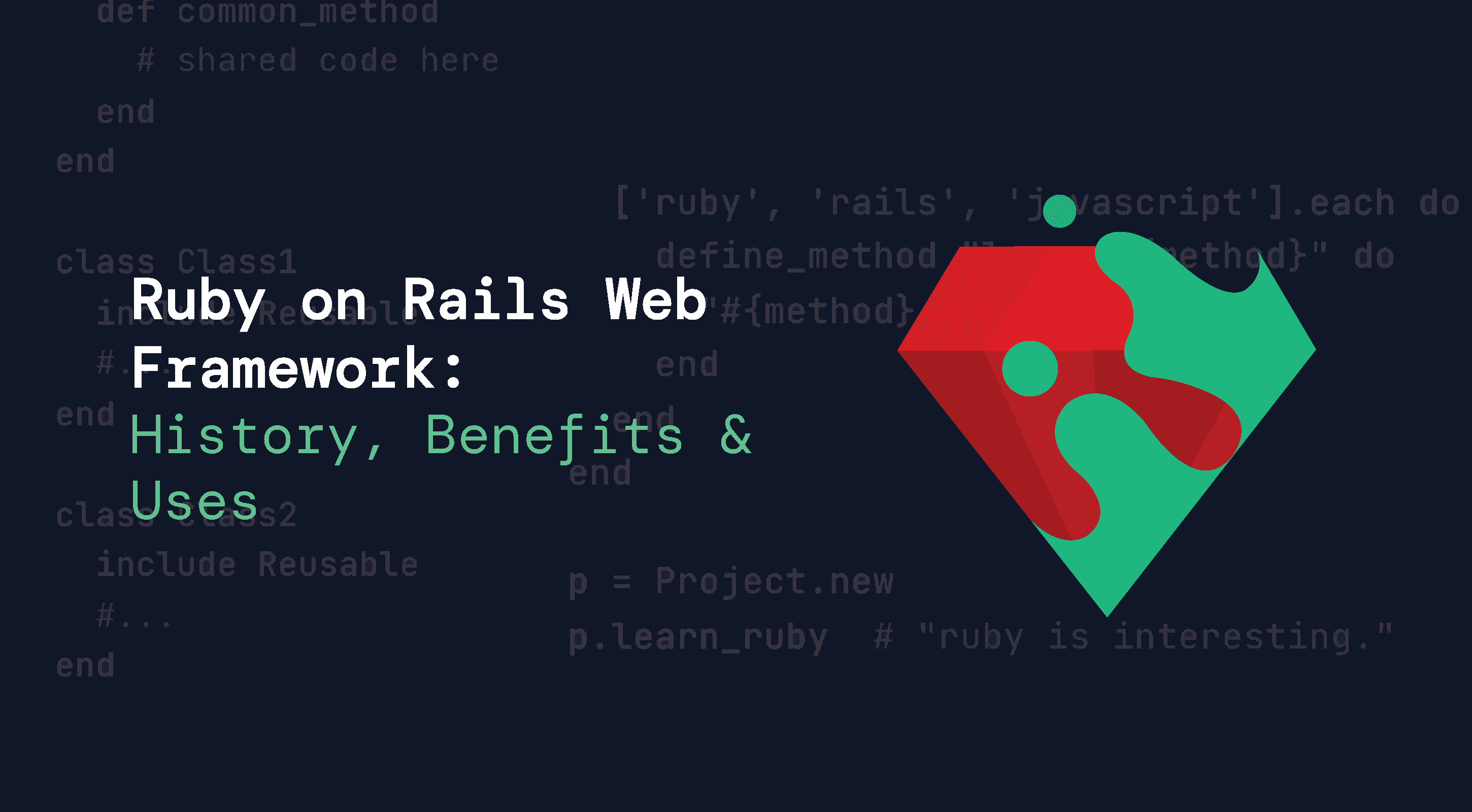
Every time you book accommodation on Airbnb, share code on GitHub, or make a purchase from one of Shopify's million-plus online stores, do you know that you're interacting with Ruby on Rails.
What started as a simple framework extracted from a project management tool has grown into a technological powerhouse. Today, Ruby on Rails powers over 1 million websites worldwide, including some of tech's biggest success stories.
According to recent studies by BuiltWith, Ruby on Rails is used by 7.09% of the top 10,000 websites, demonstrating its dominance in high-traffic, enterprise-level applications.
In 2025, as we witness the rise of microservices, serverless architectures, and AI-driven development, Ruby on Rails isn't just surviving – it's thriving.
This comprehensive guide explores Rails' remarkable journey from its inception to its current status as a mature, battle-tested framework.
Whether you're a startup founder evaluating technology choices, a developer considering your next career move, or an enterprise architect planning a system upgrade, understanding Rails' evolution and its future trajectory is crucial in today's rapidly changing tech landscape.
What is Ruby on Rails?
Ruby on Rails is an open-source web application framework written in Ruby that follows the Model-View-Controller (MVC) architectural pattern. At its core, Rails embodies two fundamental principles that have become its hallmark: "Convention over Configuration" and "Don't Repeat Yourself" (DRY).
The framework provides developers with the structure and tools needed to build database-backed web applications efficiently. By emphasizing convention over configuration, Rails minimizes the need for explicit configuration, allowing developers to focus on what makes their application unique rather than boilerplate code.
Key components of the Ruby on Rails framework include:
- Active Record for database management
- Action Controller for handling web requests
- Action View for rendering templates
- Active Support for Rails utilities
- Action Mailer for sending emails
- Active Job for background processing
Ruby on Rails Evolution (2005-2025)
Rails' story began in 2004 when David Heinemeier Hansson extracted it from Basecamp, a project management tool. The Ruby on Rails framework was officially released as open source in February 2005, marking the beginning of a new era in web app development.
The framework's evolution has been marked by significant milestones:
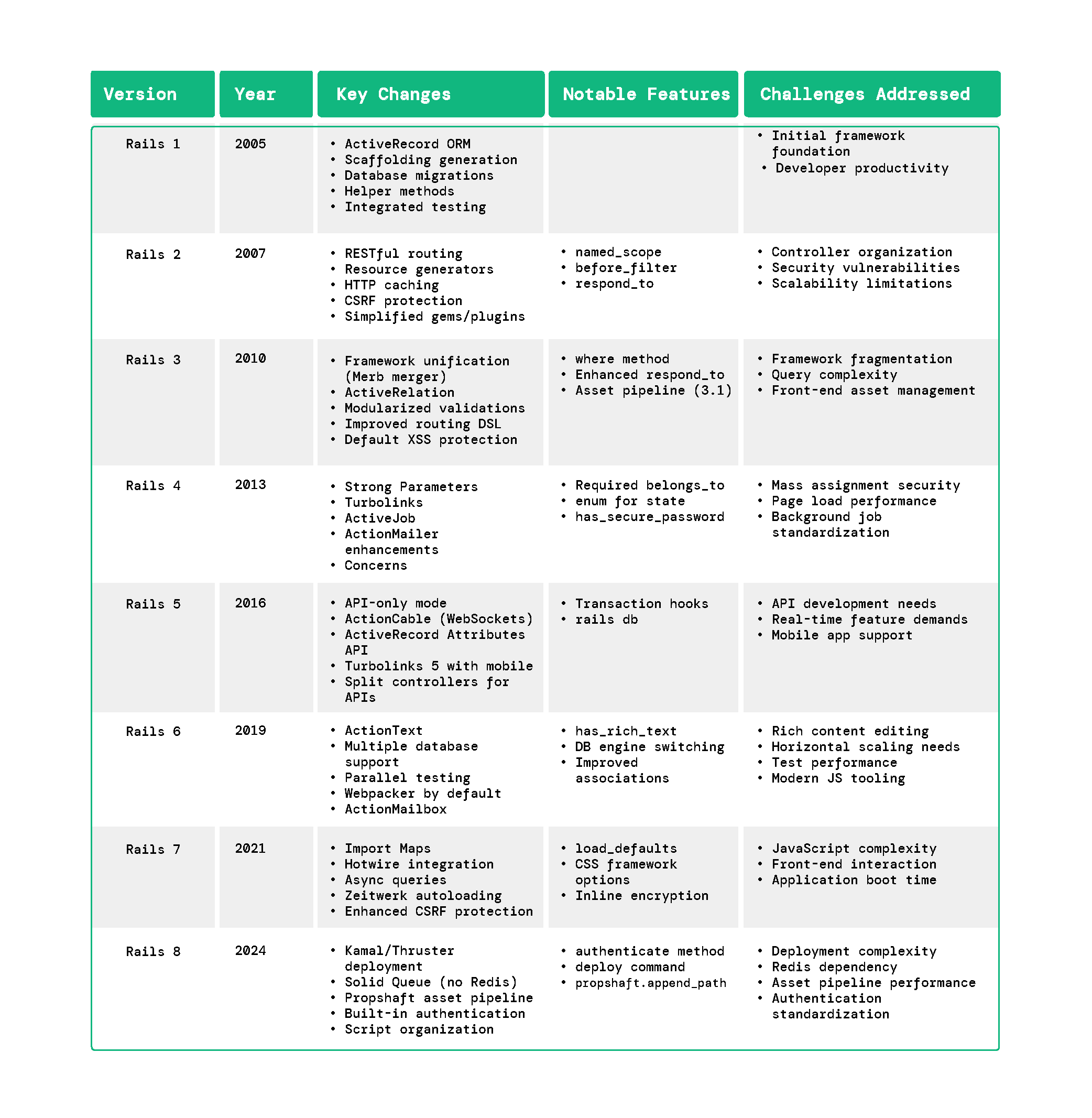
Six Compelling Reasons to Choose RoR
As technology leaders and developers evaluate framework options, one question consistently arises: "What are the advantages of Ruby on Rails?”.
At RailsFactory, where we've successfully delivered hundreds of Rails projects, we've identified six key advantages that make Rails stand out in the crowded landscape of web app development frameworks.
1. Rock-Solid Security with Rapid Development
Rails isn't just about speed – it's about secure speed.
The Ruby on Rails framework comes with battle-tested security features built right into its core.
By following the MVC (Model-View-Controller) pattern and implementing security best practices by default, Rails helps developers create robust applications without sacrificing development velocity.
Cross-site scripting protection, SQL injection prevention, and CSRF guards are just the beginning.
2. Lightning-Fast Application Development
As a full-stack framework, Rails eliminates the need to piece together different technologies. Its comprehensive toolkit includes everything from database ORM to templating engines, routing systems, and API builders.
This integration means developers can focus on business logic rather than infrastructure plumbing. At RailsFactory, we've seen projects launch up to 40% faster compared to other frameworks.
3. Exceptional Cost-Effectiveness
The economic benefits of Rails extend beyond initial development. With its emphasis on convention over configuration and DRY (Don't Repeat Yourself) principles, Rails significantly reduces the amount of code needed to build robust applications. This translates to:
- Lower development costs
- Reduced debugging time
- Faster time-to-market
- Minimized maintenance expenses
4. Streamlined Maintenance and Management
The MVC architecture in Rails isn't just a pattern – it's a powerful organizational tool. This structured approach means:
- Clear separation of concerns
- Easier team collaboration
- Simplified debugging processes
- Reduced technical debt
These benefits are particularly evident in long-term projects where maintainability is crucial.
5. Advanced Metaprogramming Capabilities
Rails leverages Ruby's sophisticated metaprogramming features to create more with less code. This means developers can:
- Build flexible, adaptable applications
- Create powerful domain-specific languages
- Implement complex patterns with minimal code
- Enhance code reusability
Our team at RailsFactory regularly employs these techniques to create elegant solutions for complex business requirements.
6. Effortless Updates and Scalability
The Rails ecosystem excels in providing clear upgrade paths and scalable solutions. With its consistent code structure and comprehensive documentation, updating Rails applications is remarkably straightforward.
Whether you're adding new features or scaling to handle millions of users, Rails grows with your needs.
The framework's proven track record in handling high-traffic applications – from Shopify's global e-commerce platform to GitHub's massive code repository – demonstrates its capability to scale effectively.
What is Ruby on Rails Used For?
Ruby on Rails (RoR) has been a go-to framework for developers across industries due to its simplicity, scalability, and flexibility.
Known for its ability to streamline development, RoR empowers businesses to build a wide variety of applications, from prototypes to large-scale, feature-rich platforms.
Here's a closer look at some of the key application areas where RoR truly shines:
1. MVPs (Minimum Viable Products)
RoR is a top choice for startups and businesses aiming to launch MVPs quickly and efficiently.
**Rapid Prototyping: **RoR’s convention-over-configuration approach allows developers to save time by following established best practices. Its rich library of plugins and tools enables quick feature implementation without writing extensive code.
Validation of Ideas: Startups can use RoR to build functional prototypes and validate their business ideas in the market before investing heavily in full-scale development.
Examples: Many successful startups, such as Basecamp and Twitter (in its early days), relied on Ruby on Rails to launch their MVPs.
2. Social Networking Apps
Building social platforms requires features like user management, real-time updates, and scalability—all strengths of Ruby on Rails.
Scalability: RoR supports seamless scaling as user bases grow, ensuring smooth performance during traffic spikes.
User Management: Built-in functionalities like authentication, authorization, and profile management make it easy to create community-driven apps.
Example: Platforms like GitHub, a collaboration tool widely used by developers, started with Ruby on Rails.
3. E-commerce App Development
Ruby on Rails simplifies the development of robust and user-friendly e-commerce platforms.
Feature Integration: RoR integrates seamlessly with third-party tools for payment processing, shipping, and analytics.
Inventory Management: The framework supports complex database operations, making it easy to manage large inventories and track stock levels.
Example: Shopify, one of the largest e-commerce platforms globally, leverages RoR to provide a seamless user experience for merchants and customers alike.
4. FinTech Development
The FinTech sector demands secure and high-performing applications, and RoR delivers on both fronts.
Security Features: RoR provides built-in security measures like SQL injection prevention, CSRF protection, and encrypted passwords, ensuring compliance with industry standards.
Performance Optimization: With its scalability and efficient data handling, RoR is well-suited for financial applications requiring real-time updates.
Examples: RoR is used to build payment gateways, budgeting tools, and investment platforms. For example, platforms like Square rely on Rails for their financial operations.
5. Apartment Sharing and Booking Apps
Applications for shared accommodations and travel booking benefit from RoR's speed and flexibility.
Core Features: RoR supports features like real-time booking systems, secure payment gateways, and user reviews.
Scalability for Growth: As these platforms grow, RoR’s ability to handle increasing users and transactions ensures long-term stability.
Example: Airbnb, in its early stages, used Ruby on Rails to establish a reliable and scalable platform for its growing user base.
6. Platforms Supporting Complex Databases
Applications with heavy data requirements thrive on RoR’s efficient database management capabilities.
Data Handling: RoR works well with relational databases, making it ideal for applications requiring extensive data storage, retrieval, and analysis.
Flexibility: Its Active Record framework simplifies interactions between the application and databases, enabling developers to focus on building features rather than managing backend complexity.
Examples: Platforms in fields like data science, analytics, or SaaS solutions often rely on Ruby on Rails for its robust database management features.
Web Apps Built on Ruby on Rails
Many industry leaders trust Ruby on Rails framework for their applications:
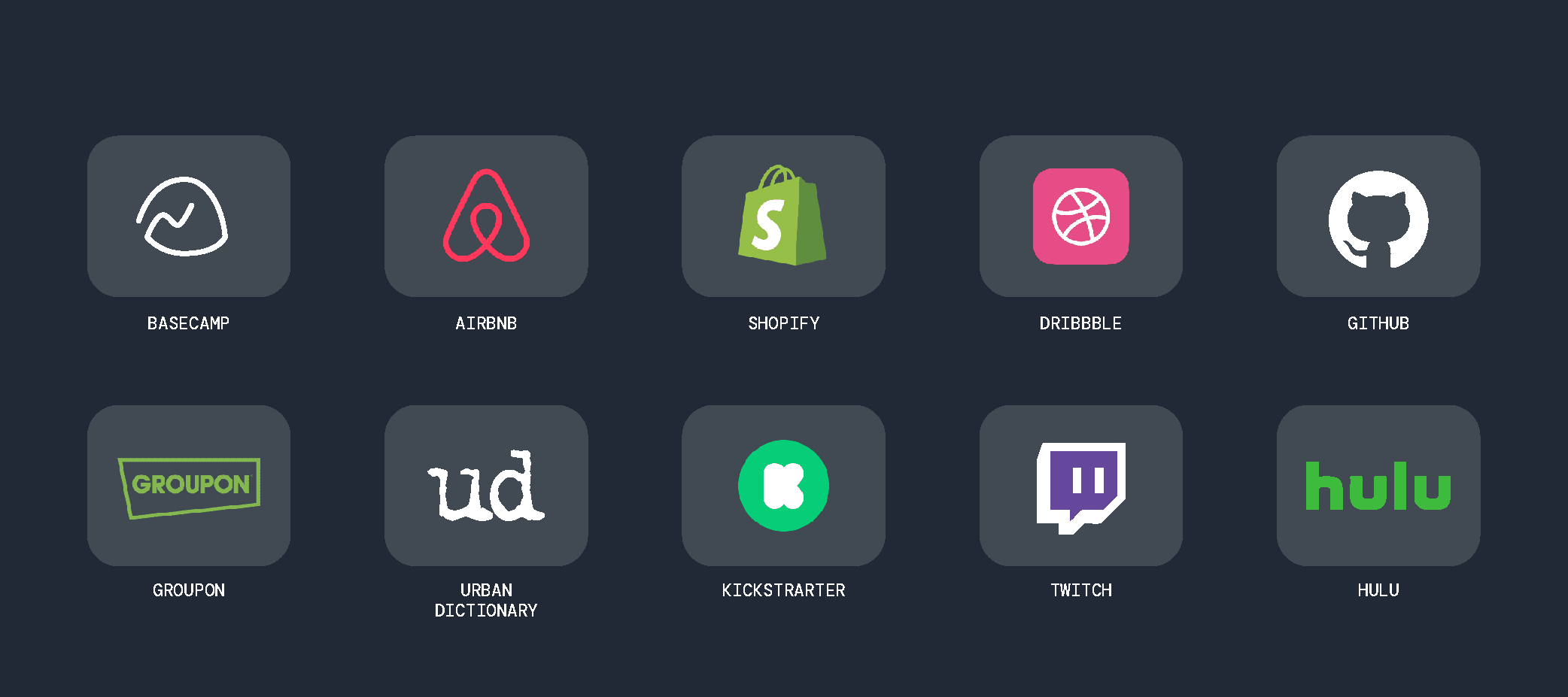
Future of Ruby on Rails
In recent years, debates have surfaced online about whether Ruby on Rails (RoR) is losing its relevance in the ever-evolving tech landscape.
Critics often claim that RoR struggles to keep up with modern demands, lacking the cutting-edge features developers need for today’s rapid development cycles.
But is there truth to these claims?
The Ruby on Rails framework has a history of adaptation, and its evolution speaks volumes. The framework has consistently evolved, culminating in the latest release - Ruby on Rails 8. This version brings a host of advanced features tailored to meet the demands of contemporary software development.
Looking ahead, Ruby on Rails is set to thrive in an era of fast-paced technological advancements. With its commitment to innovation and community-driven growth, it will continue to be one of the most exciting frameworks for developers worldwide.
The future of Ruby on Rails isn’t just secure, it is dynamic and full of possibilities.
Version Compatibility
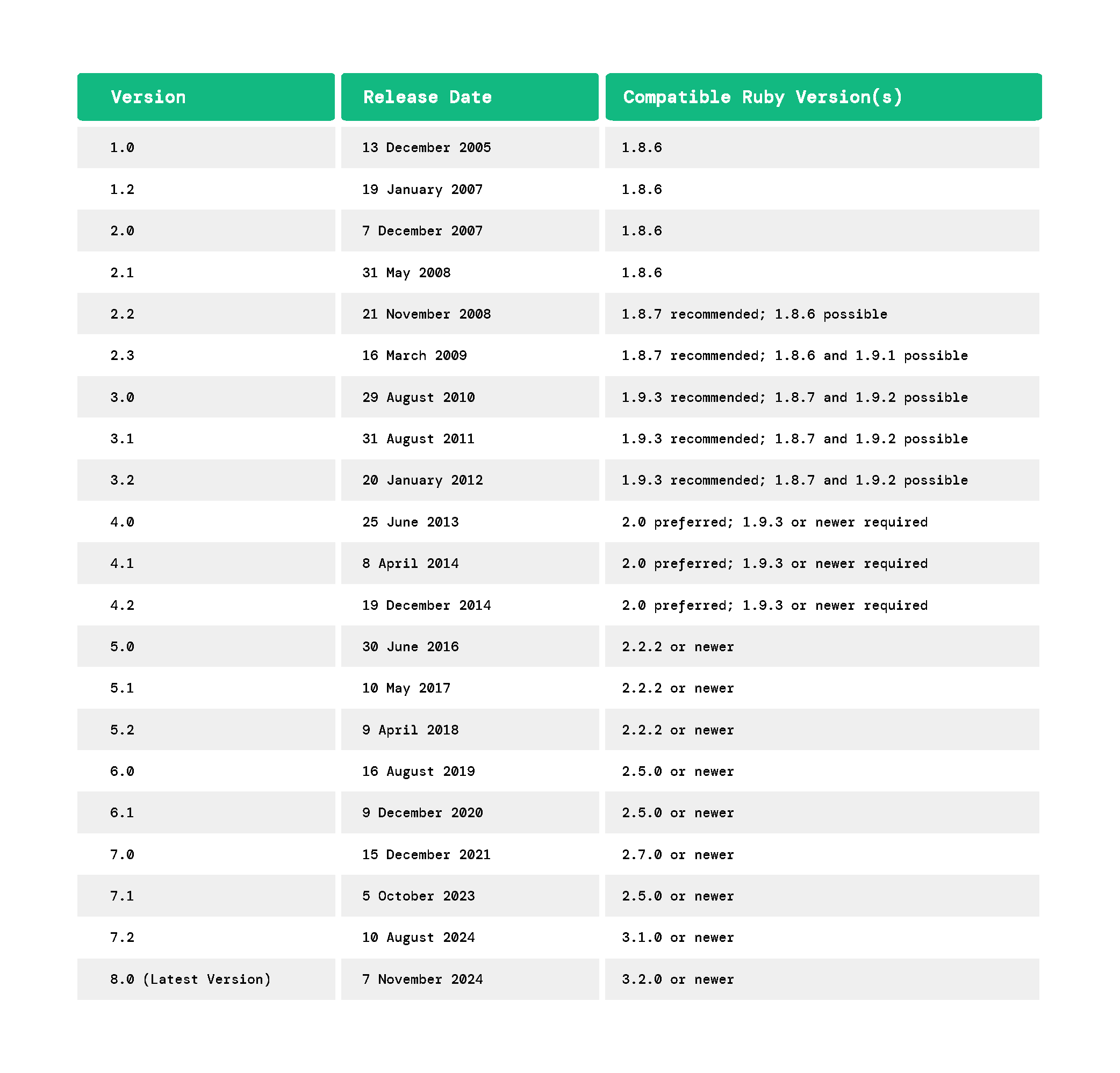
Why Upgrade to Ruby on Rails Latest Version?
Upgrading to the latest version of Ruby on Rails, such as Rails 8.0, ensures your application stays competitive, secure, and efficient.
Here are key reasons to consider upgrading:
1. Enhanced Security
The latest version includes critical security updates to protect your application against vulnerabilities. It ensures compliance with modern security standards, safeguarding sensitive data.
2. Improved Performance
Rails 8.0 introduces optimizations that significantly boost application speed and responsiveness. This enhancement leads to better user experiences and reduced server resource consumption.
3. Access to New Features
Each new Rails release comes packed with innovative features to expand your application’s capabilities. These features streamline development and provide tools for creating robust, modern solutions.
4. Better Developer Productivity
Upgrading often brings improved tooling and developer-focused enhancements. These updates reduce coding complexity and speed up development workflows.
5. Long-Term Support
Staying on the latest version ensures continued support from the Rails community, including regular updates and bug fixes. This support minimizes risks of compatibility issues and outdated dependencies.
6. Compatibility with Modern Dependencies
Upgrading ensures your application works seamlessly with the latest gems, libraries, and third-party tools. It prevents integration conflicts and supports modern development practices.
7. Future-Proofing Your Application
Rails 8.0 prepares your application for evolving technologies and industry trends. It allows your business to adapt to changing user demands without overhauling your system.
8. Reduced Technical Debt
Upgrading helps eliminate deprecated code and outdated frameworks. This cleanup makes your application more maintainable and scalable for the long term.
Ruby on Rails Job Demand
There is a high and consistent demand for Ruby on Rails developers in the job market, especially in industries such as web app development, e-commerce, and startups.
At the time of writing, the LinkedIn job search shows over 3000 listings for “Ruby on Rails Jobs,” with salaries ranging from $40,000 to as much as $200,000 per year.
With this number of targeted listings on a given day, it’s clear that the demand for quality junior and senior Rails developers is not being met, making RoR an ideal starting point if you’re an out-of-work dev wondering where to kickstart your career.
According to the Stackoverflow 2023 Annual Developer Survey, Ruby is the 4th highest-paying technology in the world.

There are many businesses that continue to rely on Ruby on Rails for their existing applications.
As per Indeed, the average salary of a RoR developer in the United States is $120,758 as of May 2025.

If you are going to be an RoR developer, you can snatch such opportunities from our job listings.
Final Thoughts
Ruby on Rails has stood the test of time, evolving from a revolutionary framework in 2005 to a modern, battle-tested powerhouse in 2025. From startups to Fortune 500 companies, Rails continues to power some of the world’s most critical platforms, proving that innovation and simplicity can coexist.
But even the most robust framework requires expert guidance to unlock its full potential. That’s where RailsFactory steps in.
With 850+ successful projects, a team of 350+ skilled RoR developers, and deep expertise across development, upgrades, DevOps, and staff augmentation, RailsFactory is your trusted partner for everything Rails.
- Need to build fast? We deliver robust RoR apps on time and on budget.
- Looking to upgrade? We simplify complex migrations to the latest version of Rails.
- Want to scale your team? Tap into our vetted RoR talent with zero hiring hassle.
- Need a strategic tech partner? Our consulting services align with your long-term business goals.
Ready to take your Ruby on Rails application to the next level?
Talk to experts at RailsFactory today and future-proof your product with the experts in all things Rails.

